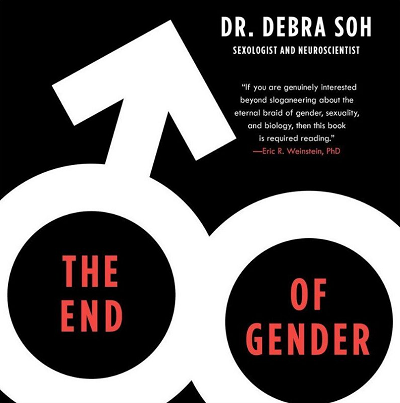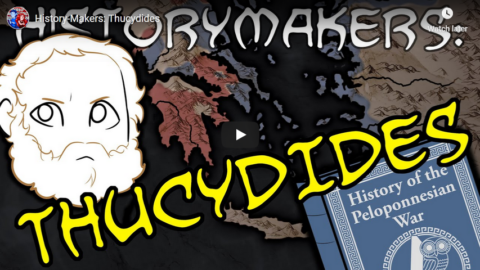Atun-Shei Films
Published 21 Aug 2020For #ProjectFrance, I collaborated with @The Cynical Historian to teach y’all about the cosmopolitan cultural exchange between revolutionary France and a country called the United States of America in the late 18th and early 19th century. In this video, I discuss the contentious relationship between Anglo-Americans and French Creoles in New Orleans in the years after the Louisiana Purchase.
Support Atun-Shei Films on Patreon ► https://www.patreon.com/atunsheifilms
Leave a Tip via Paypal ► https://www.paypal.me/atunsheifilms (All donations made here will go toward the production of The Sudbury Devil, our historical feature film)
Buy Merch ► teespring.com/stores/atun-shei-films
#NewOrleans #History
Watch our film ALIEN, BABY! free with Prime ► http://a.co/d/3QjqOWv
Reddit ► https://www.reddit.com/r/atunsheifilms
Twitter ► https://twitter.com/atun_shei~REFERENCES~
[1] Lo Faber. “Anglo-Americans” (2018). 64Parishes https://64parishes.org/entry/anglo-am…
[2] Richard Campanella. Bienville’s Dilemma: A Historical Geography of New Orleans (2008). University of Louisiana at Lafayette, Page 170-171
[3] Peter J. Kastor. “Louisiana Purchase and Territorial Period” (2018). 64Parishes https://64parishes.org/entry/louisian…
[4] Daniel Rasmussen. American Uprising: The Untold Story of America’s Largest Slave Revolt (2011). Harper Perennial, Page 16
[5] Kimberly S. Hanger. Bounded Lives, Bounded Places: Free Black Society in Colonial New Orleans, 1769-1803 (1997). Duke University Press, Page 54-56
[6] Mary Gehman. The Free People of Color of New Orleans (2009). Sheridan Books, Page 49-51
[7] Rasmussen, Page 159-163
August 22, 2020
Creoles, Kaintucks, and the Culture War of Early New Orleans (feat. The Cynical Historian)
Debra Soh’s new book is “a cancel-culture grenade”
Jen Gerson knows that any positive mention of Debra Soh’s The End of Gender: Debunking Myths About Sex and Identity has a strong resemblance to square-dancing in a minefield. Cancellations may fall like raindrops on the career of anyone so unenlightened as to even acknowledge the existence of such a work:
For that, at its heart, is what Soh’s book is: a lucid discussion of the best science we have to date on the nature of gender and sex, written for a lay audience. What gives the title its sizzle is not the content, but rather the cultural climate in which it is being published.
It maps the depth, scope and scale of current Culture War trenches in this particular theatre of battle. The End of Gender stomps on tripwires like the gender binary, whether transgender women are women, autogynephilia, Rapid Onset Gender Dysphoria, bathroom bans, and more.
It’s a cancel-culture grenade.
That’s not because these subjects ought to be contentious. Soh’s approach and tone are largely neutral. Rather, the controversy the book will inevitably incite is a reflection of a culture that has been warped into a state of existential terror by the very notion that these ideas can be responsibly discussed.
Soh begins by defining her terms.
So much of the debate around the most difficult topics of sex and gender stem from the simple fact that we are misusing the basic language. For example, sex and gender are not interchangeable concepts, even though they are often treated as such.
Sex is a term of biology. One’s sex, Soh argues, is determined by his or her gametes. With the exception of rare intersex disorders, 99 per cent of the population has a clearly defined biological sex that slots into one of two dimorphic categories: male or female.
Gender is more complicated. It’s now popular to state that there are more than two genders, but Soh disputes this. She argues that gender — or the set of characteristics that signal one’s sex to society — is also dimorphic. For 99 per cent of the population, gender correlates with sex. Further, even when expressions of gender are at odds with one’s biological sex, this, too, is mediated by biology. Whether one presents as gender typical or gender atypical is the result of prenatal testosterone exposure.
Soh notes that claiming to be gender non-binary, or gender fluid — or any one of a thousand variations that transcend the limiting concepts of male and female — is increasingly trendy, especially among teenagers and young adults. It seems to be the latest form of identity experimentation.
There are two reasons for this trend.
The first is that seeing the world through an intersectional framework encourages progressives to reverse the traditional hierarchies of race, sex and power. Therefore, claiming a marginalized identity — like genderqueer non-binary unicorn — accrues status within progressive peer circles.
The second is that the culture has undergone a massive awakening to transgender rights over the past decade. This has contributed expressive categories and vocabularies for people who otherwise might have struggled to find the language to explore their most authentic selves. As the cues, like cosmetics and dress, that we used to signal our gender are socially constructed, gender expression is limited only by our creativity.
History-Makers: Thucydides
Overly Sarcastic Productions
Published 21 Aug 2020Start your free trial at http://squarespace.com/overlysarcastic and use code
OVERLYSARCASTICto get 10% off your first purchase.Ahh ancient Greece, it has been entirely too long. Today we’ll take a look at the foundational work of my entire career path — Thucydides’ History of the Peloponnesian War, a book that almost single-handedly set the standard for how we engage in historical inquiry. Also it has the added benefit of being about Ancient Greece so win-win!
SOURCES & Further Reading: History of the Peloponnesian War by Thucydides, Histories by Herodotus, Hellenica by Xenophon, and the 4 straight years I spent studying this in university — Boy do I love doing a video about a topic I’m specifically trained in.
This video was edited by Sophia Ricciardi AKA “Indigo”. https://www.sophiakricci.com/
Our content is intended for teenage audiences and up.PATREON: https://www.Patreon.com/OSP
DISCORD: https://discord.gg/kguuvvq
MERCH LINKS: https://www.redbubble.com/people/OSPY…
OUR WEBSITE: https://www.OverlySarcasticProductions.com
Find us on Twitter https://www.Twitter.com/OSPYouTube
Find us on Reddit https://www.Reddit.com/r/OSP/
John Cabot’s patent monopoly grant and the rise of the modern corporation
In the latest Age of Invention newsletter, Anton Howes traces the line of descent of modern corporate structures from the patent granted to John Cabot to explore (and exploit) a trade route to China:

The replica of John Cabot’s ship Matthew in Bristol harbour, adjacent to the SS Great Britain.
Photo by Chris McKenna via Wikimedia Commons.
I discussed last time [linked here] how the use of patent monopolies came to England in the sixteenth century. Since then, however, I’ve developed a strong hunch that the introduction of patent monopolies may also have played a crucial role in the birth of the business corporation. I happened to be reading Ron Harris’s new book, Going the Distance, in which he stresses the unprecedented constitutions of the Dutch and English East India Companies — both of which began to emerge in the closing years of the sixteenth century. Yet the first joint-stock corporation, albeit experimental, was actually founded decades earlier, in the 1550s. Harris mentions it as a sort of obscure precursor, and it wasn’t terribly successful, but it stood out to me because its founder and first governor was also one of the key introducers of patent monopolies to England: the explorer Sebastian Cabot.
As I mentioned last time, Cabot was named on one of England’s very first patents for invention — though we’d now say it was for “discovery” — in 1496. An Italian who spent much of his career serving Spain, he was coaxed back to England in the late 1540s to pursue new voyages of exploration. Indeed, he reappeared in England at the exact time that patent monopolies for invention began to re-emerge, after a hiatus of about half a century. In 1550, Cabot obtained a certified copy of his original 1496 patent and within a couple of years English policymakers began regularly granting other patents for invention. It started as just a trickle, with one 1552 patent granted to to some enterprising merchant for introducing Norman glass-making techniques, and a 1554 patent to the German alchemist Burchard Kranich, and in the 1560s had developed into a steady stream.
Yet Cabot’s re-certification of his patent is never included in this narrative. It’s a scarcely-noted detail, perhaps because he appears not to have exploited it. Or did he? I think the fact of his re-certification — a bit of trivia that’s usually overlooked — helps explain the origins of the world’s first joint-stock corporation.
Corporations themselves, of course, were nothing new. Corporate organisations had existed for centuries in England, and indeed throughout Europe and the rest of the world: officially-recognised legal “persons” that might outlive each and any member, and which might act as a unit in terms of buying, selling, owning, and contracting. Cities, guilds, charities, universities, and various religious organisations were usually corporations. But they were not joint-stock business corporations, in the sense of their members purchasing shares and delegating commercial decision-making to a centralised management to conduct trade on their behalves. Instead, the vast majority of trade and industry was conducted by partnerships of individuals who pooled their capital without forming any legally distinct corporation. Shares might be bought in a physical ship, or even in particular trading voyages, but not in a legal entity that was both ongoing and intangible. There were many joint-stock associations, but they were not corporations.
And to the extent that some corporations in England were related to trade, such as the Company of Merchant Adventurers of London, or the Company of Merchants of the Staple, they were not joint-stock businesses at all. They were instead regulatory bodies. These corporations were granted monopolies over the trade with certain areas, or in certain commodities, to which their members then bought licenses to trade on their own account. Membership fees went towards supporting regulatory or charitable functions — resolving disputes between members, perhaps supporting members who had fallen on hard times, and representing the interests of members as a lobby group both at home and abroad — but not towards pooling capital for commercial ventures. The regulated companies were thus more akin to guilds, or to modern trade unions or professional associations, rather than firms. Members were not shareholders, but licensees who used their own capital and were subject to their own profits and losses.
Before the 1550s, then, there had been plenty of unincorporated business associations that were joint-stock, and even more unincorporated associations that were not joint-stock. There had also been a few trade-related corporations that were not joint-stock. Sebastian Cabot’s innovation was thus to fill the last quadrant of that matrix: he created a corporation that would be joint-stock, in which a wide range of shareholders could invest, entrusting their capital to managers who would conduct repeated voyages of exploration and trade on their behalves.
QotD: Sex-differentiated status hierarchies
Jordan Peterson had this to say about sex-differentiated status hierarchies:
Girls can win by winning in their own hierarchy — by being good at what girls value, as girls. They can add to this victory by winning in the boys’ hierarchy. Boys, however, can only win by winning in the male hierarchy. They will lose status, among girls and boys, by being good at what girls value. It costs them in reputation among the boys, and in attractiveness among the girls. Girls aren’t attracted to boys who are their friends, even though they might like them, whatever that means. They are attracted to boys who win status contests with other boys.
“whatever that means”. Heh. Shivvy way to say, “which means nothing”.
When JP discusses sex differences, he could be reading CH posts. Whatever one thinks of the criticisms leveled against him (some are valid), he does have a decent grasp of the sexual market and how men and women navigate divergent routes through an ocean of mate prospects to get what they want.
However, this is one of the rare instances when I disagree with his premise. He’s generally correct that, at least within the bounds of our current cultural arrangement, women have two status hierarchies available to them while men only have one. Our gynarcho-tyranny not only encourages but aggressively impresses upon women the urgency and even moral duty of succeeding in male domains (leaning in), while simultaneously encouraging men to sacrifice their status within their own male domains to make way for more women (and consequently rendering themselves less sexually attractive to women who are now their equal or higher in social status).
Women who do succeed in the man’s world can expect to ascend the intrafemale status ladder (more precisely, the intra-feminist status ladder), but where JP is wrong is assuming these women don’t also suffer an SMV status loss the near-equivalent of the SMV status loss suffered by men who succeed at girlie games of one-uppance.
Just as girls aren’t attracted to effeminate males, and other men are repulsed by nancyboys, the inverse is as true: men aren’t attracted to masculine, status-striving girls, and other women don’t subconsciously look up to mouthy careerist shrikes with the same mix of envy and admiration that they look up to physically beautiful women.
CH, “Sex-Based Status”, Chateau Heartiste, 2018-06-04.







